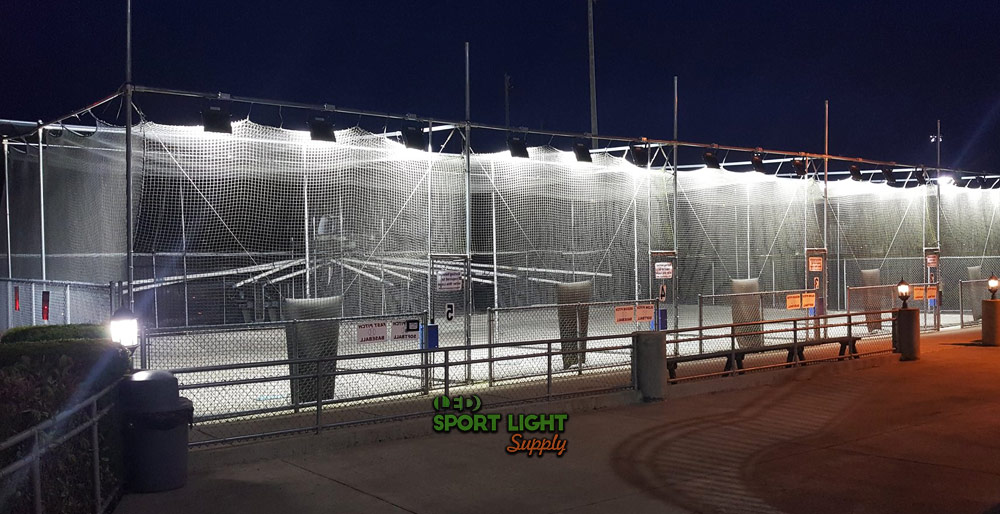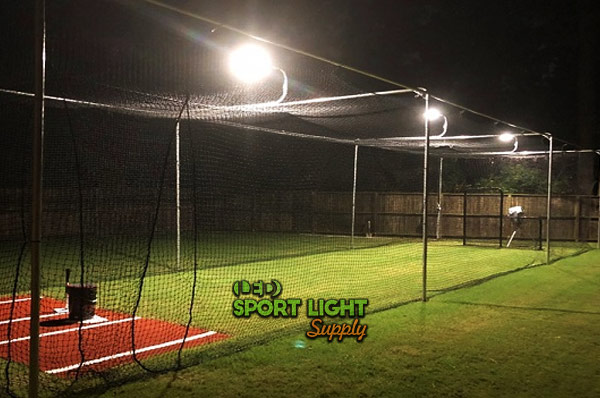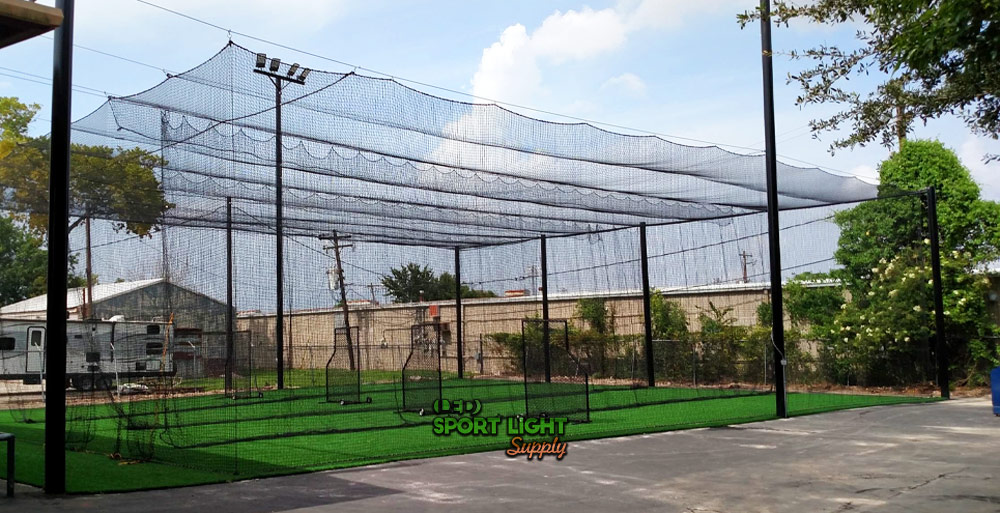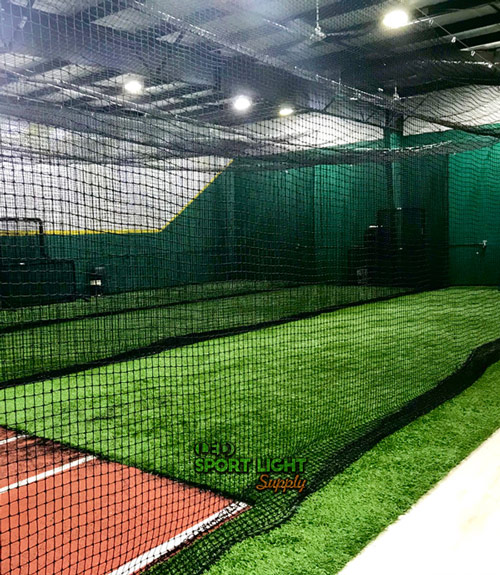A solar energy system offers a viable solution for illuminating your batting cage while reducing energy costs. By harnessing the power of the sun, you can achieve efficient lighting and enjoy long-term savings on electricity. However, installing photovoltaic panels comes with both advantages and disadvantages.
One of the key benefits of solar panels is their portability. Unlike traditional lighting systems, which are often fixed in place, solar panels can be moved and repositioned as needed. This flexibility makes them particularly suitable for temporary or changing setups. On the downside, the initial investment required for purchasing and installing solar panels can be significant, which may deter some from considering this option.
For those who may already be familiar with the concept of solar flood lights for outdoor sports fields, it’s worth noting that while this technology is gaining popularity, the higher upfront costs often lead many to overlook it. In this article, we will not assume prior knowledge of the latest developments in solar lighting technology.
To provide a comprehensive overview, we will start with a brief introduction to solar energy technology. Next, we will explore the main advantages and potential drawbacks of using solar panels for LED batting cage lighting. We will discuss the scenarios where solar panels can be an optimal choice and address the issue of cost in detail. By the end of this article, you will have a clearer understanding of whether solar lighting is a practical and cost-effective solution for your needs.

Table of Contents
ToggleHow Solar Batting Cage Lighting Works
A solar batting cage lighting system operates through a combination of solar panels, rechargeable batteries, and LED lights, providing an eco-friendly and cost-effective solution for illumination. Here’s a breakdown of how this system works:
Daytime Charging
During daylight hours, the photovoltaic (PV) panel captures solar energy and converts it into electricity. This electrical energy is then stored in a rechargeable battery integrated within the system. The efficiency of this process depends on the intensity of sunlight and the overall exposure time, which can vary based on weather conditions and seasonal changes.
Nighttime Illumination
At night, the stored energy in the battery powers the LED lights. Many solar lighting systems are designed with an automatic switch that turns the lights on as the sun sets, ensuring consistent illumination without requiring manual operation. Some advanced models even offer remote lighting control, allowing users to adjust the lighting settings conveniently.
Runtime and Weather Dependency
The duration for which the lights remain on is influenced by several factors, including the amount of sunlight collected during the day and the weather conditions. On cloudy days or during winter months, when sunlight is less intense, the battery may not fully recharge, which could affect the runtime of the lighting system.
Backup Options
In cases where the batteries do not receive sufficient charge, some systems provide a backup option by connecting to the electric grid. Additionally, professional models often come equipped with a trailer and their own generator, offering more flexibility and reliability. These high-end models may also feature a telescopic light pole for enhanced illumination coverage. On the other hand, most commercial solar lighting products are more streamlined, typically including only the LED flood lights and the PV panel.
Features You Should Be Using: The Advantages of Solar Batting Cage Lights
Environmentally Friendly Design
Adopting a solar-powered lighting system for your batting cage is more than just a practical choice; it’s a commitment to environmental sustainability. By utilizing renewable resources, such as solar energy, high school coaches and parents who install these lights send a powerful message of respect for the environment. This isn’t just about “going green”; it’s about supporting a healthier, more sustainable lifestyle.
Solar LED lights play a significant role in reducing pollution. Although the production of photovoltaic panels does involve some environmental impact, ongoing advancements in technology are leading to more efficient and less polluting materials. As solar technology continues to evolve, it promises even greater energy efficiency and lower environmental impact. Investing in solar lights means supporting the future of innovative, eco-friendly technology.

Easy to Install and Remove
One of the standout features of solar batting cage lights is their ease of installation and removal. These systems do not require complex procedures like digging trenches or laying underground wires. Instead, you simply place the lights and position the photovoltaic panel.
Most solar lighting kits come with everything you need for a straightforward setup. The instructions are typically user-friendly, requiring no specialized skills. Some models even feature hooks and unique designs, allowing for creative installation options, such as attaching the lights to a backpack or the roof of your car.
When it comes time to move the lights, the process is equally hassle-free. You won’t need to disturb the turf or deal with tangled wires. Most commercial solar lights are lightweight, often weighing less than 5 pounds (2.5 kg), making them easy to handle and reposition as needed.
Easy to Maintain

Maintaining a solar lighting system is relatively simple. The photovoltaic system consists of small solar cells made from amorphous, mono, or polycrystalline silicon, connected in a series. These cells are encapsulated in what’s known as a photovoltaic module. The modules themselves require minimal maintenance.
Routine upkeep primarily involves keeping the solar panel free from dust and debris. If the panel becomes dirty, it may not effectively convert sunlight into electricity. Beyond occasional cleaning, there is little else required to maintain the system. Solar panels and LED lights generally have long lifespans, often lasting up to ten years when properly installed and maintained.
Smart Lighting Control
Many modern solar batting cage lights come equipped with smart technology, allowing for convenient control via a smartphone (iPhone or Android). Features such as automatic dusk-to-dawn activation ensure that the lights turn on and off as needed.
With smart lighting control, you can adjust the brightness and color temperature of the lights to suit your preferences. Options typically include warm or cool white light, as well as natural daylight effects (around 4500K). This level of control helps maintain optimal lighting conditions inside the batting cage, ensuring effective training sessions. If the light intensity drops below the recommended level, the adjustment capabilities of smart controls help ensure that the training environment remains productive and efficient.
Every Reason We Shouldn’t Choose Solar Batting Cage Lighting – The Disadvantages

Not Suitable for Indoor Baseball Facilities
Solar batting cage lights are not ideal for indoor settings, especially in environments like basements where daylight is scarce. Since photovoltaic panels rely on direct sunlight to function, placing them in an area with limited natural light makes them ineffective. Even if you mount the solar panels on external walls, it may not be a practical solution for indoor baseball facilities, as adequate sunlight is essential for proper charging.
Additionally, positioning the panel inside a sports facility and orienting it towards a window is insufficient for maintaining optimal performance. Solar panels require at least six hours of direct sunlight to fully recharge their batteries, a condition that is rarely met indoors, even with clear skies. This limitation affects the lux levels, or brightness and uniformity of light, which is crucial for effective training, particularly for inexperienced batters who need consistent lighting.
Not Suitable for Cloudy Regions
In regions where cloudy weather is frequent, solar panels face significant challenges. The efficiency of solar panels declines on overcast days, as their ability to charge batteries is reduced. Calculating the exact performance of solar panels in such conditions is complicated due to various factors, including cloud cover density and duration.
However, solar panels can still produce some energy on cloudy days when sunlight intermittently filters through clouds. While this may temporarily boost the output, it generally does not compensate for prolonged periods of low light. An expert appraisal can help determine whether solar lighting fixtures are a viable option for your batting cage based on local weather patterns and solar exposure.
Short Battery Life
A common drawback of solar batting cage lighting systems is their relatively short battery life. Most standard batteries in these systems last between 4 to 6 hours, which may be insufficient for extended use. While higher-end models with better battery capacities are available, they come at a higher cost.
Selecting solar flood lights with appropriate battery capacity and wattage is crucial to avoid issues like inadequate brightness or glare. For winter use or extended lighting needs, careful consideration of battery performance and recharging times is essential to ensure that the lighting remains effective throughout the required duration.
Tight Budget Constraints
The initial cost of solar LED lights is often a significant concern for many buyers. Although solar technology offers long-term savings on electricity bills, the upfront investment can be substantial. This high initial cost can be a barrier for those on a tight budget, despite the potential for future savings.
As technology advances, the prices of solar panels are expected to decrease. However, waiting for further price reductions might not be practical. Investing in solar lighting solutions now can still lead to savings on electricity and contribute to a greener environment. Consulting with experts can help you navigate the options and determine if the benefits of solar lighting outweigh the initial costs for your specific needs.
Why Choose Solar LED Lights?
LED Lights Are Less Energy-Consuming
Solar energy is a clean, renewable, and inexhaustible resource, offering a sustainable solution for our energy needs. While current solar energy conversion efficiency is still developing, solar panels provide an opportunity to utilize this abundant resource effectively. LED lights complement solar power perfectly due to their remarkable energy efficiency.
Compared to traditional halogen lights, LEDs are far superior in energy consumption. For instance, a 100W LED light can produce the same brightness as a 1,000W halogen light, making LEDs significantly more efficient. This efficiency is crucial given the current limitations in solar energy conversion, allowing you to maximize the benefits of solar power while minimizing energy consumption.
LED lights are widely used in professional baseball diamond lighting and offer advanced features that ensure high-quality illumination. They provide flicker-free lighting, which is essential for televised games, and deliver consistent, professional-grade lighting on the field. By choosing LEDs, you benefit from the same lighting technology used in official sporting venues, enhancing both convenience and practicality.
Longer Lifespan
One of the most compelling advantages of LED lights is their extended lifespan. A typical LED flood light can last over 150,000 hours, significantly outlasting traditional lighting options. This longevity translates to lower maintenance costs, as LED lights require minimal upkeep. Their durability reduces the frequency of replacements and ensures a more cost-effective lighting solution.
LED flood lights are equipped with heat sinks to prevent overheating, further extending their operational life. Similarly, the maintenance requirements for solar panels are minimal. Regular cleaning is necessary to maintain optimal energy efficiency, but this can typically be done with simple cleaning products. The solar panel itself is designed to last for many years and often comes with a warranty.
For maintaining a solar LED batting cage lighting system, it’s advisable to work with a specialized company for more complex needs. However, basic cleaning of the solar panel can be easily managed on your own with appropriate cleaning supplies. This combination of long-lasting performance and low maintenance makes solar LED lights an excellent choice for efficient and sustainable lighting.
Solar Batting Cage Light Cost
Solar Lamp Cost
When outfitting a batting cage with solar lighting, the power requirements typically range from 100 to 400 watts per LED solar flood light, depending on the size of the field and the level of competition (recreational or club baseball).
On average, a standard 100W LED solar flood light with wireless remote control costs between $80 and $100. While there are cheaper options available, investing in high-quality lights is advisable for better performance and durability.
When selecting a solar flood light, consider the following high-quality features:
| Feature | Description |
|---|---|
| IP67 or IP68 Rating | Ensures the lights can withstand heavy rain without damage, suitable for various weather conditions. |
| Flexible Design | Adapts to different areas and uses, making it versatile for various training setups. |
| Dawn-to-Dusk Function or Wireless Control via App | Offers convenience in managing lighting schedules with automatic operation or remote control. |
| Motion Sensor | Provides illumination upon entry, enhancing safety and preventing inconvenience in the dark. |
Installation Cost
Installing portable solar batting cage lights is generally straightforward. Most systems come with an instruction manual for easy assembly and placement. However, if your batting cage lacks a dedicated frame or pole, you may need to hire a professional.
Designing a complete solar batting cage lighting layout from scratch can cost up to $1,000 or more, depending on the complexity of the installation. Purchasing light fixtures beforehand can help reduce costs. If you already have a batting cage frame and only need the lighting equipment, your expenses will be primarily for labor.
For sports facilities and baseball clubs requiring multiple installations, obtaining a detailed quote is essential. This ensures that all aspects of the installation, including multiple photovoltaic panels and fixtures, are accounted for in the budget.
Conclusion
Installing solar batting cage lighting offers significant advantages, such as energy savings and the use of rechargeable batteries. However, the initial investment may be a concern for those on a tight budget. Cheaper alternatives are available, but they might not provide the same level of performance and longevity.
Assess your current lighting system’s energy consumption to determine if the initial cost of solar lighting is justified. For those unsure about the suitability of solar lighting, starting with a cost-effective model for basic training can be a prudent approach. As you accumulate savings from reduced electricity bills, you can consider upgrading or retrofitting your batting cage lighting for enhanced performance. Consulting with experts can help you make an informed decision tailored to your specific needs.
